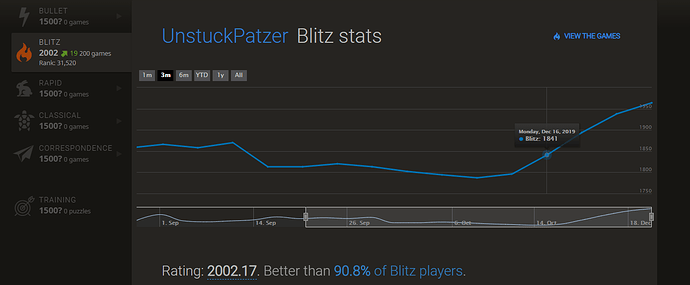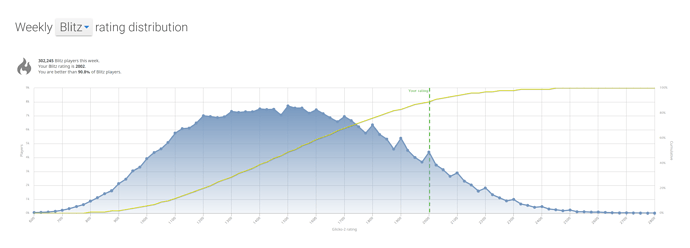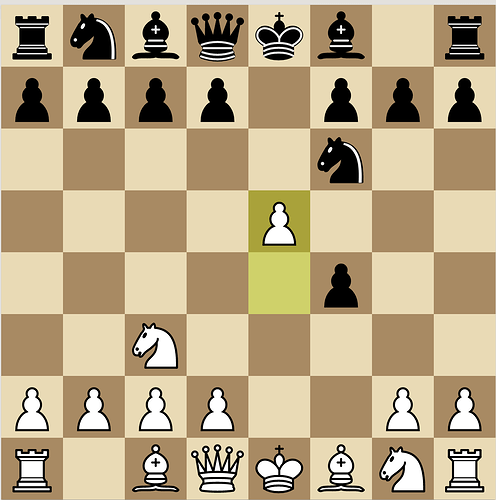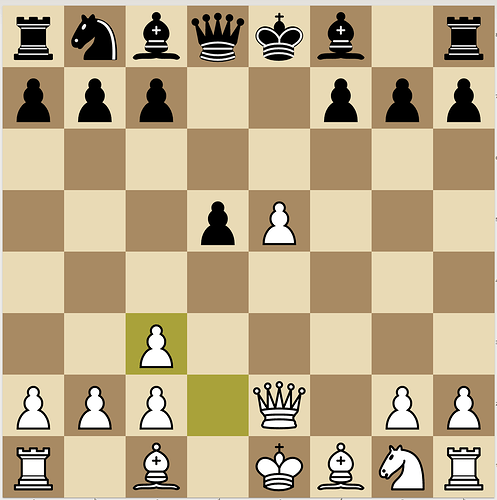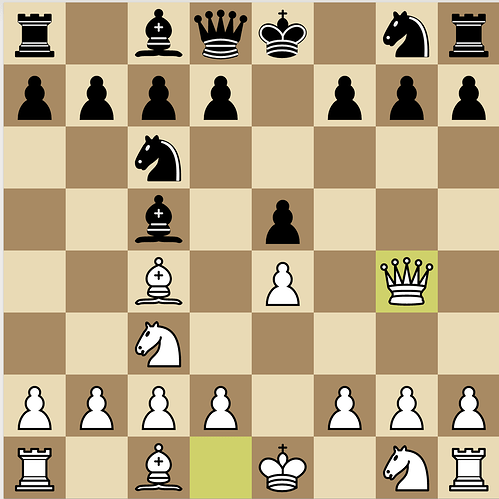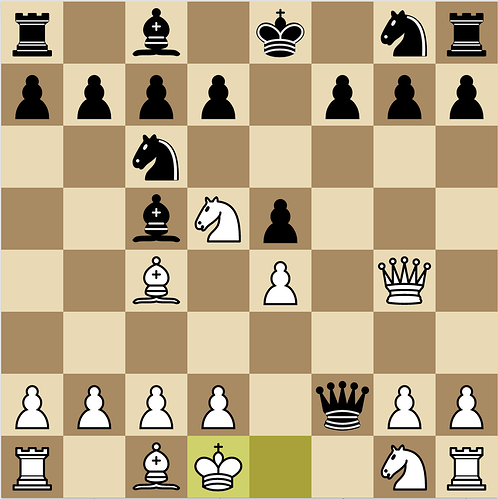In celebration of 2000 rating, I thought I’d give a quick guide to one of the few bits of my opening repertoire I actually really like.
A Super-Quick Patzer’s Guide to the Vienna Game
1. e4 e5
2. Nc3
The fun part of the Vienna is the opportunity to frequently play f4 or, sometimes, an early Qg4. People frequently aren’t sure what to do here. Let’s start with:
2. … Nf6
3. f4
It’s quite natural to take here, but it’s bordering on unplayable for Black.
3. … exf4
4. e5
The knight must make an ignominious retreat to g8. Qe7 doesn’t help; just Qe2 and it’s the same deal. After the knight retreats you just play Nf3 (don’t allow Qh4+!), d4 and so on. If they play d6, intending takes/takes and exchanging queens, just allow them to take, then Qe2 pinning the pawn and recapture on e5 after that. It’s a miserable position for Black, lots of fun as White, I win most of the games where this happens.
A better try is d5 instead of exf5, where I like:
3. … d5
4. fxe5 Nxe4
5. Qe2 Nxc3
6. dxc3
Black can play moves other than Nxc3, but I have literally never faced any other move. The plan here is simple: overprotect e5 and make it a strong point, castle long and enjoy your space and open lines. I think it’s technically an equal position, but I have a lot of fun playing it.
Responses to 2. Nc3 other than Nf6: if d6, I just play f4 immediately. If Bc5 or Nc6, I aim for the following line:
3. … Nc6
4. Bc4 Bc5
5. Qg4
Here, 90% of the time Black is like “Qf6, no brainer, defend g7 and attack f2”. However, this runs into an awful shock.
5. … Qf6
6. Nd5! Qxf2+
7. Kd1
Believe it or not, Black is in trouble here. It gets complicated, but White is threatening to do three different things:
- Take on g7 and take the rook (but you must be careful about Black returning fire with Qxg2)
- Play Na3 and when the queen goes to d4, play d3 and threaten to trap the queen with c3
- Fork on c7
It’s very complex and not always easy to convert, but to give you an idea of the kind of trouble Black is in, the engine-recommended move is Kf8 with +1.53 (depth 28) and everything else is +3 or better. Of the alternatives to 5. … Qf6, the most important to know is g6, where you play Qf3, also with an advantage for White. I’d say I face Qf6 about 90% of the time, though.
If Black doesn’t cooperate, generally it’s because he developed both knights instead, whereupon I play d3 and then f4 in response to just about everything. I think f4 is actually bad for White in some lines here, but I don’t know or care which, because my opponents don’t know which either. The position is flexible. Sometimes I maintain the pawn on f4, but if Black castles early I’ll frequently play f5, shutting down the light square bishop and providing a fulcrum for a kingside attack. Sometimes if I haven’t played Nf3 yet, it even goes g6, trying to get rid of the pawn chain, and I can just reply g4. Sometimes things go wrong, but it’s fun and there are a lot of opportunities.
Beyond a few subtleties here and there, that’s honestly kind of it. The above is enough to go give it a try yourself.

